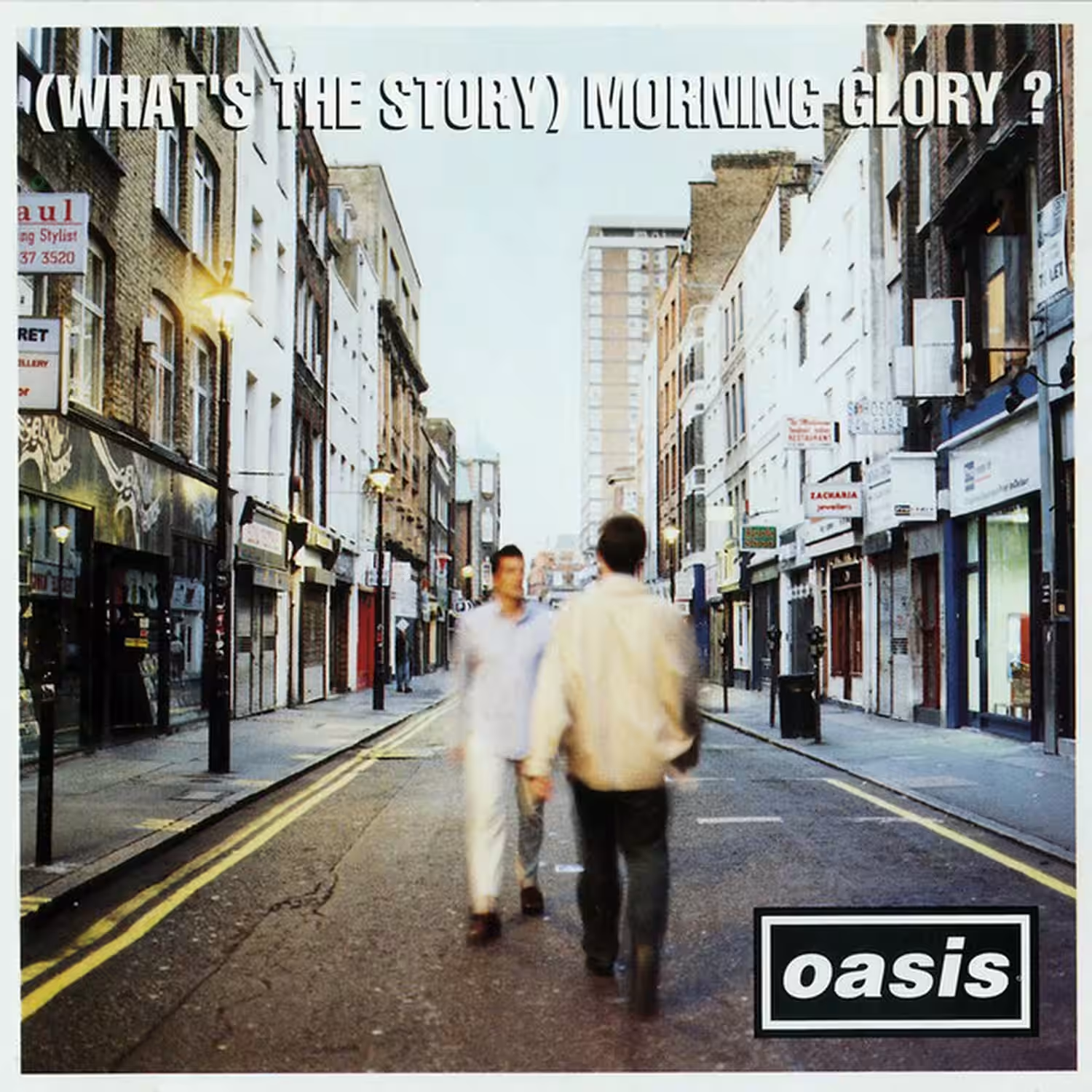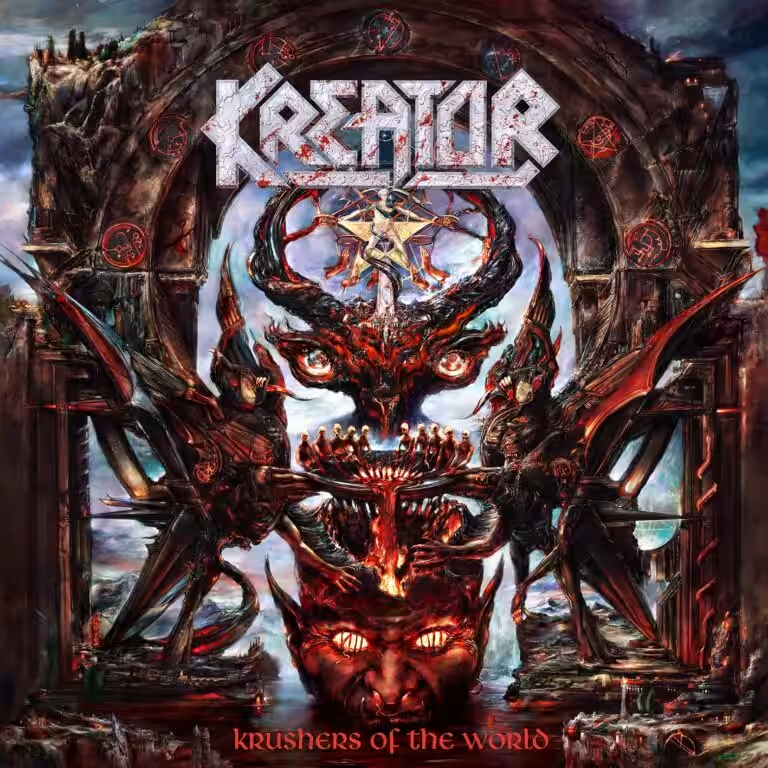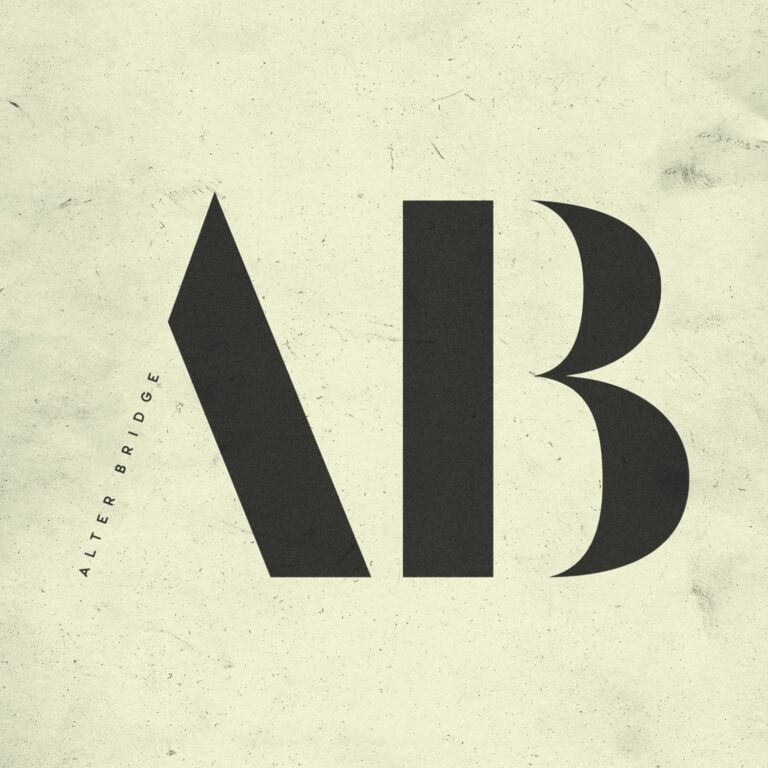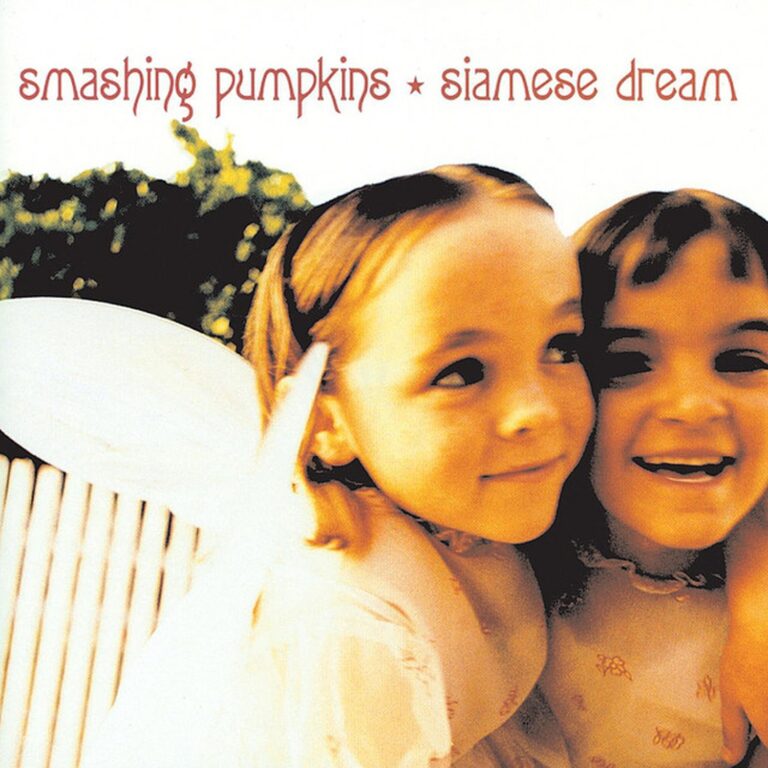
In October 1995, the world changed for Oasis and for British music. Their second album, (What’s The Story) Morning Glory?, burst onto the scene, rewriting the rules for what a rock band could achieve. This record didn’t just top the charts—it helped define an era, inspired a generation, and became the soundtrack to millions of lives. Whether you’re a lifelong fan or a newcomer, there’s always more to discover about this landmark album.
Our episode about this record is here:
This article takes you through every aspect of (What’s The Story) Morning Glory?: its creation, recording, critical and commercial impact, track-by-track analysis, lyrics, touring, legacy, and much more. You’ll find rare anecdotes, detailed tables, direct quotes, and verified facts—leaving no stone unturned. Let’s dive into the story behind one of the best-selling and most influential albums of the 1990s.
| Attribute | Details |
|---|---|
| Album title | (What’s The Story) Morning Glory? |
| Release date | 2 October 1995 |
| Genre | Britpop, Rock |
| Total runtime | 50:06 |
| Number of tracks | 12 (original release) |
| Record label | Creation Records |
| Recording studio | Rockfield Studios, Wales |
| Producer(s) | Owen Morris, Noel Gallagher |
From its anthemic singles like “Wonderwall” and “Don’t Look Back in Anger” to the cultural phenomenon it sparked, this album left an indelible mark. Its legacy is seen in its chart dominance—over 22 million copies sold worldwide, ten weeks at UK number one, and a spot as the best-selling album of the 1990s in Britain (Wikipedia).
Reflecting on its impact, Noel Gallagher told NME in 1995, “It’s about actually being a pop star in a band.” Paul Weller, who guested on the album, said, “It’s the best British record I’ve played on since The Jam.” The album’s influence continues today, with Oasis’s songs still filling stadiums and inspiring new artists.
Here’s what you’ll find in this article: the genesis of the album, the full recording story, commercial and critical reception, deep track analysis, lyrical meanings, touring tales, the album’s far-reaching legacy, media usage, and more. Whether you want facts, stories, or analysis, you’ll find it here.
The Genesis of (What’s The Story) Morning Glory?
Britain in 1994 and 1995 was buzzing with change. Britpop had exploded, with bands like Blur, Pulp, and Oasis at the forefront. Oasis had already shaken the world with their debut, Definitely Maybe, which topped the UK charts and set sales records. The group’s mix of working-class swagger, sharp songwriting, and raw energy resonated far and wide.
After their debut, Oasis were eager to move forward. Noel Gallagher, the band’s main songwriter, began crafting new material that would build on their early success but aim for even greater heights. The goal was clear: bigger choruses, more ballads, and an album that would stand the test of time. The band’s line-up also changed—Alan White replaced original drummer Tony McCarroll during the sessions, bringing a different feel to the rhythm section.
Noel Gallagher took charge of the writing, but every member played a key role. Liam Gallagher’s distinctive vocals defined the album’s sound. Paul “Bonehead” Arthurs added solid rhythm guitar, while Paul “Guigsy” McGuigan handled the bass. Alan White’s drumming was tight and precise. Guest musicians, most notably Paul Weller, contributed guitar, harmonica, and backing vocals, adding further depth to the music.
Here is a detailed look at the band members and their roles:
| Band Member | Instrument(s) / Role(s) |
|---|---|
| Liam Gallagher | Lead vocals, tambourine |
| Noel Gallagher | Lead guitar, backing vocals, lead vocals on “Don’t Look Back in Anger”, piano, Mellotron, EBow, bass, production |
| Paul “Bonehead” Arthurs | Rhythm guitar, Mellotron, piano, Hammond organ |
| Paul “Guigsy” McGuigan | Bass guitar |
| Alan White | Drums, percussion |
| Tony McCarroll | Drums on “Some Might Say” |
| Paul Weller | Lead guitar, backing vocals on “Champagne Supernova”, harmonica on “The Swamp Song” |
Financing came from Creation Records, led by Alan McGee, who believed in Oasis’s vision. The recording budget was estimated at £60,000—a substantial sum, but modest compared to the album’s eventual impact. Financially, the band faced the usual pressures of second-album expectations, but McGee’s support and the band’s drive saw them through.
The album’s title, “(What’s The Story) Morning Glory?”, came from a phrase used by Noel’s friend Melissa Lim, which itself originated in the film Bye Bye Birdie. The cover, designed by Brian Cannon, features two men passing on Berwick Street, London—a nod to the area’s record shops. The sleeve cost £25,000 to produce, with Cannon and DJ Sean Rowley as the men on the cover. Producer Owen Morris can be spotted in the background holding the master tape. Noel later admitted he wasn’t entirely happy with the cover, but its image has become iconic.
Recording Process
The story of the recording sessions is as compelling as the music itself. The main sessions took place at Rockfield Studios in Wales during May and June 1995. This studio, founded in 1961, is renowned for its rural setting and classic equipment. Previous clients included Queen, Rush, and Coldplay, making it a legendary place for bands seeking inspiration and technical excellence (Sound On Sound).
Producer Owen Morris, working alongside Noel Gallagher, drove the sessions with a fast-paced, no-nonsense approach. The band recorded the album in just 15 days—often finishing a song each day. The focus was on capturing energy and immediacy, not endless perfection. Engineer Nick Brine handled the technical side at Rockfield, while mixing was completed at Orinoco Studios in London. Owen Morris had previously worked with bands like The Verve and The Rolling Stones, bringing valuable experience to the table.
Rockfield Studios boasted an impressive array of gear and recording spaces. Here is a summary of the likely hardware and techniques used during the sessions, based on studio records and period interviews:
| Equipment/Technique | Details |
|---|---|
| Mixing Desk | Neve 8128 (Coach House), MCI 500-series (Quadrangle) |
| Outboard Gear | UREI 1176LN, Neve 2254 compressors, ADR, Tube-Tech, Dbx, Klark Teknik |
| Tape Machines | Studer A820 |
| Microphones | Neumann U67, SM2, KM64, AKG C12a, C28, Sennheiser MD421, MD441, Shure SM57 |
| Guitars | Gibson Les Paul, Epiphone Sheraton, Gibson Firebird, Epiphone EJ-200 acoustic |
| Amplifiers | Marshall JCM 900, Vox AC30, Orange OD120, WEM combo, Fender amps |
| Keyboards | Mellotron, Kurzweil |
| Effects | Ibanez TS9 Tube Screamer, Boss DD-3 Delay, Boss CS-3 Compressor, Vox Wah, Boss PH-3 Phaser |
| Recording Techniques | Live tracking, heavy compression (“brickwall” mastering), use of echo chambers and plate reverbs |
Recording was not without its challenges. The band’s hard-living reputation followed them into the studio, but producer Owen Morris kept them focused. Paul Weller’s contributions—especially on “Champagne Supernova”—brought a new dimension to the sound. The sessions were intense but creative, with the group feeding off each other’s energy. Noel Gallagher later described the sessions as “a mad blur,” but the results speak for themselves.
Owen Morris’s career includes work with The Verve and Ash, among others. Here’s a list of albums he has produced, engineered, or mixed (excluding (What’s The Story) Morning Glory?):
| Producer | Artist | Album | Year |
|---|---|---|---|
| Owen Morris | Oasis | Definitely Maybe | 1994 |
| Owen Morris | Oasis | Be Here Now | 1997 |
| Owen Morris | Ash | 1977 | 1996 |
| Owen Morris | The Verve | A Northern Soul | 1995 |
For more on the making of Definitely Maybe, see our article here. For Ash’s 1977, check out this review.
Commercial Performance and Reception
When (What’s The Story) Morning Glory? was released, it became an instant sensation. In its first week, it sold 345,000 copies in the UK, making it the second-fastest-selling album ever at the time. The album spent ten weeks at number one in the UK, peaked at number four on the US Billboard 200, and hit number one in Australia, Canada, Ireland, Sweden, Switzerland, Scotland, Spain, and New Zealand. Singles “Some Might Say” and “Don’t Look Back in Anger” reached number one in the UK, while “Wonderwall” spent 30 consecutive weeks on the UK chart and topped the singles charts in Australia and New Zealand.
The table below lists Oasis studio albums, their release years, and sales data where available. The row for (What’s The Story) Morning Glory? is highlighted for clarity:
| Album | Year | Sales Data |
|---|---|---|
| Definitely Maybe | 1994 | 1.78 million (UK) |
| (What’s The Story) Morning Glory? | 1995 | 5.4 million (UK), 22 million+ (worldwide) |
| Be Here Now | 1997 | 1.81 million (UK) |
| Standing on the Shoulder of Giants | 2000 | 685,000 (UK) |
| Heathen Chemistry | 2002 | 1.05 million (UK) |
| Don’t Believe the Truth | 2005 | 943,000 (UK) |
| Dig Out Your Soul | 2008 | 500,000 (UK) |
Certifications include 18× Platinum by the BPI (UK), 5× Platinum by the RIAA (US), and 8× Platinum by ARIA (Australia). The album won Best British Album at the 1996 Brit Awards and was named British Album of 30 Years at the 2010 Brit Awards. It remains the best-selling UK album of the 1990s.
Other major alternative and rock albums released in 1995 included:
- Jagged Little Pill by Alanis Morissette [33 million sold]
- The Bends by Radiohead
- Different Class by Pulp
- To Bring You My Love by PJ Harvey
- Elastica by Elastica
- King for a Day… Fool for a Lifetime by Faith No More
- Insomniac by Green Day
- Garbage by Garbage
- The Great Escape by Blur
In terms of awards, (What’s The Story) Morning Glory? received:
- Brit Award for Best British Album (1996)
- Brit Award for Best Album of 30 Years (2010)
- Q Award for Best Album (1996)
- Included in “1001 Albums You Must Hear Before You Die”
- Rolling Stone’s 500 Greatest Albums of All Time (#157 in 2020)
- Spin’s 300 Best Albums of the Past 30 Years (#79)
- Multiple Platinum and Gold certifications worldwide
Elsewhere in heavy music in 1995, bands like Arch Enemy, Slipknot, Soilwork, and Buckcherry formed. Key albums included King for a Day… Fool for a Lifetime by Faith No More, Symbolic by Death, Adrenaline by Deftones, and Domination by Morbid Angel. For a deep dive into 1995’s alternative rock, see SPIN’s 95 Best Alternative Rock Songs of 1995.
Track Analysis
The singles from (What’s The Story) Morning Glory? became classics. “Some Might Say” (released 24 April 1995) was the band’s first UK number one. “Roll With It” (14 August 1995) became part of the infamous “Battle of Britpop” with Blur. “Wonderwall” (30 October 1995) and “Don’t Look Back in Anger” (19 February 1996) both became anthems, while “Champagne Supernova” (13 May 1996, Australia) closed the album with a psychedelic flourish.
Below is a table listing every track from the album, their length, writing credits, and which were singles (marked with *):
| Track Name | Length | Writing Credit |
|---|---|---|
| Hello | 3:21 | Noel Gallagher, Gary Glitter, Mike Leander |
| Roll With It* | 3:59 | Noel Gallagher |
| Wonderwall* | 4:18 | Noel Gallagher |
| Don’t Look Back In Anger* | 4:48 | Noel Gallagher |
| Hey Now! | 5:41 | Noel Gallagher |
| The Swamp Song (Excerpt 1) | 0:44 | Noel Gallagher |
| Some Might Say* | 5:29 | Noel Gallagher |
| Cast No Shadow | 4:51 | Noel Gallagher |
| She’s Electric | 3:40 | Noel Gallagher |
| Morning Glory* | 5:03 | Noel Gallagher |
| The Swamp Song (Excerpt 2) | 0:39 | Noel Gallagher |
| Champagne Supernova* | 7:27 | Noel Gallagher |
Note: Tracks marked with * were released as singles. “Some Might Say” and “Don’t Look Back in Anger” both reached UK number one. “Wonderwall” and “Roll With It” peaked at number two in the UK. “Champagne Supernova” was released as a single in Australia and the US, where it topped the Billboard Alternative Songs chart.
Song Meaning and Lyrics
The lyrics of (What’s The Story) Morning Glory? range from hopeful to introspective, and the singles in particular have sparked endless debate and interpretation. “Some Might Say” was inspired by a conversation with a Christian fan, and its optimistic chorus—“Some might say, sunshine follows thunder”—suggests hope after hardship (NME). “Roll With It” is a straightforward call to perseverance and authenticity, recorded live in the studio for extra energy (Reddit).
“Morning Glory” contains references to drug use and cynicism, as confirmed by Noel Gallagher. “Wonderwall” is about an “imaginary friend who’s gonna come and save you from yourself,” though it was once rumoured to be about Noel’s then-girlfriend Meg Mathews (Interesting Literature). “Don’t Look Back in Anger” encourages listeners to move forward and not dwell on past mistakes—a message that took on new meaning after the 2017 Manchester Arena attack (The Sun). “Champagne Supernova” remains the most mysterious, with lyrics about being “caught beneath a landslide in a champagne supernova in the sky.” Noel has said the meaning changes with his mood, but many interpret it as a psychedelic reflection on youth and disillusionment (Medium).
All songs were written by Noel Gallagher, except “Hello,” which credits Gary Glitter and Mike Leander for its borrowed riff. Paul Weller’s contributions on “Champagne Supernova” and “The Swamp Song” added extra flair. Collaboration between the Gallagher brothers and guest musicians shaped the album’s unique sound.
Touring and Promotion of (What’s The Story) Morning Glory?
The promotional campaign for (What’s The Story) Morning Glory? was bold and relentless. Singles were released ahead of the album, with “Some Might Say” coming out in April 1995, followed by “Roll With It” in August, which led to the much-publicised “Battle of Britpop” with Blur. The rivalry between the bands became a media sensation, drawing huge attention to both groups. Not only that, but Oasis made frequent television appearances, radio interviews, and magazine covers to keep the spotlight shining.
The album’s tour ran from 22 June 1995 to 4 December 1996, starting with a warm-up gig at Bath Pavilion. The tour featured major UK outdoor concerts, including two nights at Maine Road, two at Loch Lomond, and two at Knebworth House—each attended by 125,000 fans. The Knebworth shows were the largest ever held by a single band in the UK, with 2.5 million ticket applications. The tour visited Europe, North America, Australia, and Asia, with more than 100 shows in total.
During 1995, Oasis shared the stage with support acts like Cast and The Verve’s Richard Ashcroft. The tour was not without drama: Noel Gallagher walked out twice, Liam missed part of the US leg, and bassist Guigsy briefly left due to exhaustion. Yet, the band’s live reputation only grew, and their headline sets became legendary.
Influences and Legacy
Musically, (What’s The Story) Morning Glory? drew from classic British rock and pop. The Beatles were a primary influence, but echoes of The Kinks, The Rolling Stones, R.E.M., The Jam, and Stevie Wonder can be heard throughout. Noel Gallagher’s songwriting is direct and confident, with a nod to the working-class roots of Manchester.
Here’s a summary of the album’s influences and the artists it later inspired:
| Influences on (What’s The Story) Morning Glory? | Artists Influenced by the Album |
|---|---|
| The Beatles | Arctic Monkeys |
| The Kinks | Coldplay |
| The Rolling Stones | Catfish and the Bottlemen |
| The Who | The Killers |
| R.E.M. | Maroon 5 |
| Paul Weller / The Jam | Drake |
| Stevie Wonder | Alvvays |
The album’s release in 1995 coincided with major global events. The UK saw the launch of the National Lottery, the release of GoldenEye (the first James Bond film with Pierce Brosnan), and political changes with John Major’s government. In music, the Britpop movement peaked, and the “Battle of Britpop” between Oasis and Blur dominated headlines. Elsewhere, the Oklahoma City bombing shocked the US, and the internet began to reshape daily life. The year also saw the release of landmark albums by Alanis Morissette, Radiohead, and Pulp, among others.
Five Things About (What’s The Story) Morning Glory?
Here are five verified facts about the album, drawn from multiple credible sources:
| Fact | Details |
|---|---|
| Fastest Recording | The album was recorded in just 15 days at Rockfield Studios, with most songs finished in a single day. |
| Knebworth Milestone | Oasis played to 250,000 people over two nights at Knebworth in 1996, the largest UK concerts ever at the time. |
| Sleeve Cost | The album cover cost £25,000 to produce and features DJ Sean Rowley and designer Brian Cannon on Berwick Street, London. |
| Brit Awards | The album won Best British Album at the 1996 Brit Awards and was named Best Album of 30 Years at the 2010 Brit Awards. |
| Mastering Controversy | The album’s “brickwall” mastering style is often cited as a major factor in the “loudness war” in music production. |
Media and Television Usage
Many songs from (What’s The Story) Morning Glory? have appeared in film and television. The table below lists known media placements:
| Song Title | Media | Year |
|---|---|---|
| Cast No Shadow (Remastered) | Goal! The Dream Begins | 2006 |
| Cast No Shadow (Remastered) | My Mad Fat Diary S2 E3 | 2014 |
| Champagne Supernova | Twisted Metal S1 E1 | 2023 |
| Champagne Supernova | iZombie S3 E5 | 2017 |
| Don’t Look Back In Anger | Ted Lasso S2 E8 | 2021 |
| Don’t Look Back In Anger | To All the Boys: Always and Forever, Lara Jean | 2021 |
| Don’t Look Back In Anger | Friends from College S1 E2 | 2017 |
| Hello (Remastered) | Elementary S2 E1 | 2013 |
Critical Reviews and Retrospectives
Critical response at release was mixed. Q magazine called the lyrics shallow, and some reviewers found the songs “generic classic rock.” NME was more positive, praising the band’s new direction. Rolling Stone described the album as “a bold leap forward.” Over time, opinion shifted. The album is now widely regarded as a classic, appearing in numerous “greatest albums” lists. It won “Best Album of 30 Years” at the Brit Awards in 2010 and remains the best-selling album of the 1990s in the UK.
After (What’s The Story) Morning Glory?
Following the album’s success, Oasis became global superstars. Their next album, Be Here Now, broke sales records but later faced critical backlash. Over the years, founding members Bonehead and Guigsy left, replaced by Gem Archer and Andy Bell. The band continued to release successful albums until their split in 2009. After a long hiatus, Oasis announced a reunion in 2025, with the original members and a new world tour, drawing massive interest and ticket sales (Manchester Evening News).
Remasters and Reissues
There have been several remastered and expanded editions of (What’s The Story) Morning Glory? since its original release. The 2014 “Chasing the Sun” edition featured remastered audio, B-sides, demos, and live tracks. In 2025, a 30th anniversary deluxe edition will include new acoustic recordings and updated artwork by Brian Cannon.
Conclusion
(What’s The Story) Morning Glory? stands as a landmark in British music. Its blend of anthemic songwriting, direct lyrics, and unfiltered emotion made it more than just a collection of songs—it became a cultural touchstone. Today, its songs are sung in stadiums and pubs, and its legacy continues to grow. With Oasis reuniting in 2025 and a new deluxe edition on the way, the album’s story is far from over.



